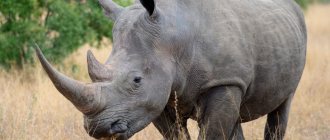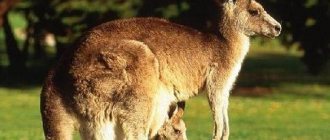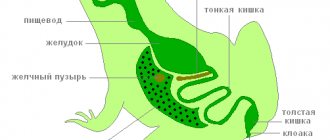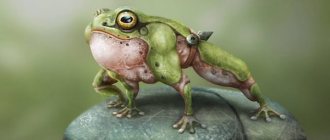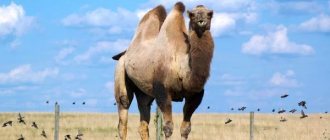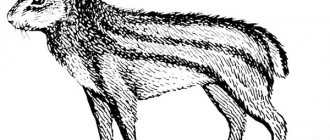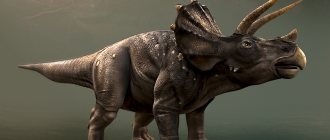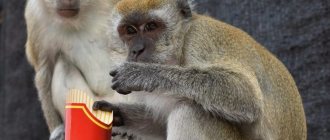As a result of evolution, the class of reptiles began to be represented by great diversity in different geographical zones: in the tropics, deserts, caves, fresh waters and seas. This is an ancient, highly organized group of terrestrial animals, which has about eight thousand species. They move along the surface of the earth in a creeping manner, hence the name of the class. Reptiles include 4 orders: scaly, turtles, crocodiles and beaked. Their development and flourishing are associated with changes in climatic conditions and the spread of continental climate during the Mesozoic era.
The topic of the article is devoted to the largest order of the class of reptiles - the order of squamates. It should be immediately noted that the classification of this group is very complex and confusing; something new is constantly being introduced or old ones are being shuffled. Therefore, different sources may have different information.
General characteristics of the squamate order
Scaly (from the Latin squama - “scales”) number 6,500 species and are considered today one of the most prosperous groups of reptiles. According to the latest scientific systematization, the squamate order is divided into 5 suborders: snakes, lizards, iguanas, geckos and amphisbaena. Representatives of the order are distributed throughout the planet and do not live only in harsh polar conditions.
Animals differ from each other in appearance and lifestyle, but they also have common features. The flexible body of scaly animals is covered with horny scales or scutes, which, depending on the type of animal, can differ in color, shape and size. The quadrate bone of the upper jaw has a movable connection with the skull. Another distinctive feature is the long tongue, which performs the function of touch and smell.
Subclass First Lizards
Protolizards are an ancient group of reptiles. In the modern world, only one species has survived - the hatteria, which lives in New Zealand. Hatteria has the appearance of a large lizard up to 75 cm in length.
Finished works on a similar topic
- Course work Diversity of reptiles 470 rub.
- Abstract Diversity of reptiles 280 rub.
- Test work: Variety of reptiles 220 rub.
Receive completed work or specialist advice on your educational project Find out the cost
Hatteria has a number of primitive structural features:
- the spine is formed by biconcave vertebrae, between which remains of the notochord are preserved;
- there are abdominal ribs, which are rudiments of the abdominal bone shield;
- The parietal organ is developed.
Reproduction of scaly
Scaly, like all reptiles, are heterosexual animals. Females have paired ovaries and oviducts that open into the cloaca, males have testes and vas deferens. Fertilization occurs internally, in the reproductive ducts of the female. The fertilized egg, moving along the oviduct, acquires protective coatings - embryonic and shell. The eggs are laid in the warmth of the ground or gestated inside the female until hatching immediately after laying.
Among squamates there are also viviparous species. For example, a common viper or a viviparous lizard: the fetus inside the mother is connected to her body by a complex system of blood vessels that provide it with the necessary nutrition and oxygen.
Snakes
In honor of these animals, temples were once built and entire cults were created, they were worshiped and idolized, legends and myths were composed. They frighten some with their appearance, while others arouse interest; humanity’s attitude towards them has always been ambiguous. We are talking about snakes, reptiles of the squamate order. This suborder consists of 18 families and has 2,700 species.
The structural features of the snake are a long body without limbs and a small head. Its spine is represented by only two sections - the trunk and the caudal, the vertebrae of which have a uniform structure. Representatives of this suborder have a cold, unblinking gaze, their eyes are covered with a transparent protective film and lack eyelids - they see poorly. Also, snakes cannot boast of hearing, they do not have ear openings, and they pick up sound vibrations from the ground. But all the disadvantages are compensated by their sense of smell, with the help of which snakes successfully navigate in space and hunt.
Snakes have a unique skull structure: the bones of the oral apparatus, and some bones of the skull are movably connected to each other. The lower jaw has highly extensible ligaments, which explains the ability to swallow prey whole. The teeth of these scaly animals are very well developed, but they cannot chew with them: they are sharp, thin and curved back. Many snakes have poisonous teeth; they have grooves through which the poison, when bitten, reaches the victim.
Biological description
The body is covered on top with horny scales, scutes or grains.
The quadrate bone is usually movably articulated with the skull. Of the temporal arches, only the upper one is preserved, or even it is missing. The pterygoid bones do not articulate with the vomer. The transverse bone is usually present.
The teeth are attached to the upper or inner surface of the jaws.
The vertebrae are amphicoelous or procoelous. There are two or three sacral vertebrae, if they are pronounced. Ribs with one head. Ventral ribs are absent or vestigial.
The pineal opening is present or absent. Jacobson's organ is usually well developed. The copulatory organ is paired. The cloacal fissure is transverse.
Lizards
The lizard suborder is a large and very widespread group of the squamate order of the class of reptiles (or reptiles). It consists of 13 families, each of which has its own characteristic features: belt-tailed animals, poisonous teeth, teiids, monitor lizards, herrosaurs and others. The largest number of species is concentrated in the tropics.
Most lizards are equipped with limbs, but there are also legless species. Unlike snakes, they have a sternum, and the jaw bones are tightly connected to each other. Lizards for the most part have well-developed eyelids and eardrums. These scaly creatures are famous for their involuntary discarding of their tail, which then grows back.
The color of lizards can be very diverse and performs a protective function; it harmonizes well with the surrounding reality.
Classification of the class Reptiles
Modern representatives of reptiles are only a small part of the rich world of ancient reptiles. Modern taxonomy divides the class into 4 orders.
- Only one representative belongs to the beak-headed order - the hatteria. Among modern reptiles, tuateria are the most ancient in origin.
It is found in New Zealand and is the most primitive among reptiles.
The beak-headed order belongs to reptiles, but also has the features of amphibians.
Hatteria is nocturnal; It uses insects and snails for food. In November-December, these organisms, which are included in the order Beakheads, lay eggs. To do this, they build an egg hole in a sunny place, in which they place from 9 to 17 eggs. An interesting fact should be noted: it takes 12-14 months for a young tuateria to emerge from an egg.
- The squamate order is the most numerous and diverse of all reptiles. The order Squamate includes three suborders: lizards, chameleons and snakes.
The lizard suborder includes representatives equipped with limbs. The most common representative of our fauna is the viviparous lizard. Found in damp forests. The female gives birth to 8 to 10 young lizards.
Pregnant female viviparous lizard
The process of viviparity was formed as an adaptation to living conditions. If these lizards were oviparous, then it can be assumed that in a dark, humid forest the embryo would not have received sufficient heat for development. In this case, the offspring would be doomed to death.
But the largest lizards - monitor lizards - are oviparous. They live in Asia, Africa, and Australia, so the warm climate has a beneficial effect on the development of offspring from eggs. For example, the gray monitor lizard lives in sandy burrows and feeds on small reptiles and insects.
The gray monitor lizard reaches a length of 1.5 m.
The largest monitor lizard is considered to be the Komodo monitor - weight 130 kg and about 3 m long. It is protected in the Komodo National Park.
Komodo dragon
Lizards also include legless representatives, such as the spindle and the copperhead. Very easy to confuse with the similar copperhead snake
Godwit lizard
Lizards, as representatives of the order Squamate, are capable of autotomy or self-mutilation. A lizard, grabbed by the tail, breaks it off, and it remains with the pursuer, while the animal itself runs away. The broken tail is restored, as regeneration is characteristic of them.
Lizard without a tail
- Representatives of the scaly suborder chameleons have adapted to arboreal life:
- The body is compressed laterally;
- Three fingers opposed to two;
- The tail is capable of curling around tree branches.
Chameleon
Snakes are considered the most mysterious animals of the squamate order. All representatives are divided into poisonous and non-poisonous.
The most common venomous snake in our fauna is the viper. During the day she basks in the sun, and at night she catches prey: mice, chicks, frogs, even insects.
Vipers bask in the sun
Of the non-venomous snakes in nature, you can often find a snake, which is sometimes confused with a viper. The snake is a reptile, up to 1 m long, black in color with semicircular yellow spots on the head. The difference between the two snakes is clearly visible in the figure.
Comparison of viper and snake
- In the order of crocodiles there are three families: alligators, true crocodiles and gharials. Crocodiles are the largest reptiles, common in the southern parts of the world.
The black caiman is the largest of the alligator family.
Representatives of the order crocodiles are terrible predators; their prey is various aquatic animals. They can often attack large mammals that come to drink.
Crocodile attacks zebra
There are known cases of attacks on humans. It should be noted that a person who has already been grabbed by a crocodile does not always die: quick resistance frightens the predator, and he dives under the water.
The order of crocodiles includes the saltwater or combed crocodile - the largest of the modern species. It reaches seven meters in length and can go into the open sea.
Saltwater crocodile
- The turtle order differs from other reptiles in appearance. The body of representatives of this order is covered with a shell. Turtles are classified according to their habitat into freshwater, land and sea.
Of the freshwater species, the marsh turtle is well known, widespread in Europe.
Swamp turtle
The largest species of this order of reptiles is considered to be the elephant tortoise, living on the Galapagos Islands. Its length reaches 110 cm, and its weight is 400 kg.
Elephant turtle
Interesting are sea turtles, whose forelimbs are flippers adapted for swimming. These include the green or soup turtle, an inhabitant of hot zones.
Green or soup turtle
Suborder Geckoformes
Not everywhere geckos are classified as a separate suborder of squamates, however, some experts still highlight it specifically. The suborder consists of 8 families: squamopods, carphodactylids, phyllodactylids, geckos, vermiform lizards and others. They live in tropical and subtropical areas and are mostly nocturnal.
The size of geckos is no more than 10-15 cm, but you can also find a large individual. These representatives of the scaly order boast of their unique fingers, which have special devices that help them stay on any vertical surface. We are talking about expanded plates with intersecting rows of brushes made of microscopic hairs.
Geckos are very peculiar in their behavior, which is not typical for other species: when hunting, just before throwing, they rise to their hind limbs, and, raising their heads high, begin to swing their tail.
Suborder Iguanaiformes
No other group of squamates can boast such a variety of life forms as iguanas. Like the geckoformes, this suborder is not universally recognized. It has 10 families: collared iguanas, anoles, helmet lizards, chameleons, spiny-tailed iguanas and others. All iguanas are divided into two types of individuals, which differ in their characteristic shape and body structure. In arboreal iguanas, the body is laterally compressed, while in terrestrial iguanas, the body has a disc-flattened shape.
The calling card of all iguanas are pleurodont teeth, which are attached to the inside of the jaws. The head of individuals is covered with multiple irregularly shaped scutes, and the back is covered with scales, transformed in places into horny spines, tubercles and teeth.
Iguanas are mostly carnivores that feed on spiders, insects and worms. Larger individuals take vertebrates as prey, most often lizards.
Classification
While snakes and moths are suborders defined by close affinities, lizards include all those diverse species of squamates that are not included in the first two suborders:
- Snake suborder ( Serpentes
) Infraorder
Alethinophidia - Infraorder Scolecophidia
)
)
)
- Infraorder monitor lizards ( Varanoidea
)
)
)
)
)
According to the latest research, lizards are a paraphyletic group. The new classification of squamates distinguishes 5 suborders:
- snakes ( Serpentes
), - amphisbaenia ( Amphisbaenia
), - Autarchoglossa
, - gecko-like ( Gekkota
), - iguanas ( Iguania
).
Belonging to the family worm-like lizards ( Dibamidae
) is not defined.
According to a 2015 study (Tod Reeder et al.), the phylogeny of modern squamates is as follows:
| scaly |
| Teioidea |
According to this study, which includes molecular data in addition to morphological data, mosasaurs are close to snakes and not to monitor lizards.
Fossils
- Yabeinosaurus tenuis
is a species of fossil squamate discovered in China that lived about 120 million years ago. - Obamadon gracilis
is a species of fossil lizard discovered in the United States that lived about 65 million years ago. - Superfamily Mosasauroidea
Vallecillosaurus donrobertoi is a species of mosasaurus that lived in Mexico about 93 million years ago. Described in 2007 based on a postcranium set (posterior half of the axial skeleton with most of the tail and left pelvic appendage, and two fragments of the tail).
Amphisbaena
The reptiles (amphisbaenians) are very similar to lizards, so this suborder has long been recognized as their family. Unlike their relatives, amphisbaena lead an underground life and resemble worms in appearance. They consist of 4 families: chirots, Palearctic worm-like lizards, amphisbaenids and rhineurids.
Animals that belong to the order Squamate have a typical common feature - horny scales on the body. Amphisbaena have a worm-like body, covered with a solid horny film and entwined with transverse rings with intersecting grooves. Therefore, their appearance also resembles scales. The horny brushes that cover the head of most scaly animals perform a burrowing function in amphisbaenas.
Amphisbaena prefer to live in termite nests. Like moles, they dig passages in the ground and move easily along them. Interestingly, on the surface of the earth they move in straight vertical lines.
Ticks
Ticks (Acari) are small, sometimes microscopically small arachnids with a very diverse lifestyle. Like spiders, these are quite common and numerous animals that live in the soil, on vegetation, in the nests of birds, mammals and insects, parasitize other invertebrate and vertebrate animals, and have re-occupied freshwater and marine biotopes.
Soil oribatid mites digest organic residues and thereby improve the properties of the soil. Some blood-sucking and parasitic mites (ixodic and argasid mites, scabies, chicken mites) are well known to people because they can carry dangerous viral and bacterial infections. Blood-sucking ixodid ticks can grow enormously when they suck out large amounts of blood. A hungry dog tick, 3–4 mm in size, when saturated with blood, grows to the size of a large bean; its mass can increase 200 times.
Blood-fed tick
Herbivorous and predatory mites living on plants, in forest litter and leaf litter, on the soil surface or rocks are quite numerous; they form specific communities of small creatures that depend on each other.
Lifespan
The squamate order is not particularly long-lived. Experts agree that there is a direct relationship between life expectancy and animal size. Large individuals of lizards live 20-30 years, and small ones no more than two years or even less. Geckos while away their lives for up to 13-15 years, the numbers can be longer, depending on the size of the individual. Snakes in nature live on average up to 30-40 years, but in captivity, thanks to human care, the years increase significantly. There are species, for example, pythons, their age can reach up to 100 years.
It should be noted that the life expectancy of reptiles is significantly reduced as a result of diseases, injuries and attacks by predators. But lately there has been a trend to keep exotic animals as pets and this certainly adds years to their life.
The meaning of the squamate order
Like all living things on this earth, scaly reptiles have their purpose in nature and human life. They are active participants in the food chain, where the elimination or change in the numbers of one species will threaten disaster for all the others.
Lizards and snakes are of great benefit to people, destroying harmful insects and rodents that not only damage crops, but are also carriers of dangerous infections. In addition, snakes are used as food by some peoples of the East. They believe that the meat and blood of scaly creatures give the body longevity, youth and health.
In medicine, the use of snake venom is also invaluable; it is present in many medicines and ointments. And, on top of that, the skins of these reptiles are used in the production of accessories and shoes.
Lifestyle
Warm conditions are considered favorable conditions for the life of reptiles, which is why they are common in countries with tropical and subtropical climates. Only a few forms cross the Arctic Circle. In mountainous countries they can be found quite high.
Reptiles predominantly lead a terrestrial lifestyle. Reptiles are cold-blooded, so their life is completely dependent on the ambient temperature. In warm weather they are highly active; in cold weather conditions their activity decreases.
During cold weather they hibernate. This is a peculiar adaptation of reptiles to life on land in a temperate climate.
Adaptations to a terrestrial lifestyle include various methods of protection from enemies. For example, the protection function of turtles is performed by the shell. To intimidate enemies, the chameleon inflates its body with a hiss, and can also change its color.
Chameleon scares the snake
An interesting active adaptation of reptiles to life in a terrestrial habitat is the presence of poisonous teeth, which help when an enemy attacks them. Snakes and poisonous lizards are equipped with such teeth.
Snakes can bite not only an animal that is an enemy or prey; sometimes a person gets in their way
However, a snake bite is the result of human negligence or self-defense of an animal. When defending, the snake takes a threatening pose and throws its head towards the person, sometimes bites and even bites twice.
What measures should you take if you are bitten by a snake?
Reptiles can play not only a negative role in human life, but also a positive one. Snake venom is widely used in medicine to treat various diseases.
The economic importance of reptiles in human life is great. Purses, handbags, and belts are made from the skin of snakes and crocodiles. The meat of some reptiles is used for cooking. And turtle eggs are considered a delicacy.
Reptiles play a positive role in agriculture. They exterminate harmful rodents that damage crops.
The importance of reptiles in nature is great. They are links in food chains - both as predators and as prey. Reptiles feed on small rodents, insects, and amphibians. They themselves are also the object of hunting for birds of prey and mammals. By eating sick and weak animals, reptiles in nature play the role of orderlies.
Poisonous representatives
A separate subject of discussion will be the toxicity of some representatives of the squamate order. Every year, about a million people suffer from snakebites alone. And, despite the effectiveness of modern medicine, mortality remains very high. A large number of attacks are recorded in tropical and subtropical zones.
Which animals of the squamate order are dangerous and pose a threat to human life? As a rule, these are separate species of snakes and the family of the poisonous lizard. Some people mistakenly define iguanas as poisonous reptiles, but in fact, they do not have any toxic poisons. They transmit a large number of bacteria with their bite, which can cause inflammation. And no poisonous representatives were found in the suborders amphisbaenus and geckos.
Of snakes, 5 families out of 18 are completely poisonous or contain poisonous species: colubrids, slates, vipers, pit vipers, and rattlesnakes. The family of vipers is widespread in Russia. Cases of attacks are observed in Siberia, the Far East, the Middle Urals and the Transcaucasian republics.
Solpugi
Solpugas have many names - in addition to the scientific one in Latin (Solifugae, translated as “running away from the sun”), they are also called phalanges or bihorcae in Russian. In English there are names like camel spider, sun spider and wind scorpion, the latter due to its fast speed of movement. In South Africa they are called baardskeerders ("barbers") or haarskeerders ("barbers") because it is believed that salpugs can "cut" the hair of animals or people to use in nest building. Of course, this is not true and no phalanx hair is cut. Despite their terrifying appearance, they have no poison and are practically not dangerous to humans; at most, they can cause a mechanical bite.
Solpuga
Interesting facts about squamates
- Legless lizards can easily be confused with snakes. But upon careful examination, you can notice the head and ear canals, which are not typical for snakes.
- The gecko is referred to in the Bible as anaka (Leviticus 11:30).
- Snakes can hibernate for three years without eating.
- In Mexico, iguana dishes are part of the national cuisine.
- Poisonous snakes love classical music and dance to it with pleasure.
- The copperhead snake smells like fresh cucumbers.
- The Mayan tribe revered iguanas; a house with them symbolized the house of the deity.
- The color of a chameleon depends on its emotional state, and not on the surrounding background.
- The king cobra feeds on snakes, including poisonous ones. Also, unlike other species, it takes care of its offspring.

